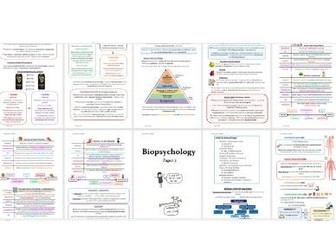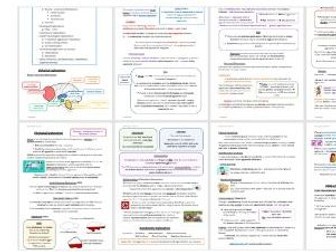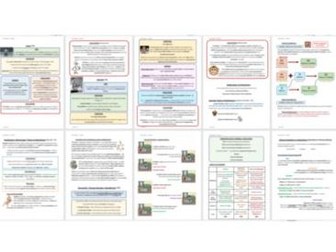AQA Psychology Paper 2 - A* Student Guide 2018 (71 pages)
I wrote this guide to use for my A Level Psychology Paper 2 in 2018 - as every other guide I had didn’t explain the course in an easy enough way to actually understand it rather than simply ‘learn’ it: I achieved an A* in psychology. The guide is very colourful and includes lots of pictures and fun memory techniques (such as word association and mnemonics) to really help students build up a strong memory of some of the most challenging, and simple, parts of the AQA specification - so you can not only learn the information by rote - but truly understand the psychology and theory behind every bit of each topic, I often describe things using real world examples. This is increidbly helpful in the much more difficult dections of paper 2, like the complex research methods + statistical testing. Everything that both the full A-Level and the AS courses teach is described in a way that is easy to understand, whilst going into more than enough detail to achieve the amount of depth necessary to achieve the highest grades in an exam.
As a (recently finished) A-Level student myself, I understand the amount of pressure students feel during an exam, and how easy it is for the mind to just ‘go blank’ - This revision guide is so helpful for making sure your mind doesn’t go blank: as the many different methods of explaining and visually/hypothetically demonstrating the whole psychology specification make it all easily relatable, understandable, and in turn much easier for a student to recall under the huge stress of an exam hall.
Not only for use by students, this guide can also be incredibly useful for teachers as an aid in class, as a way to incorporate the perspective and thought process of a fellow student into lessons - engaging and really helping students of all levels of ability in Psychology.
Every aspect of the current AQA A-Level Psychology Paper 2 specification is covered in this revision guide - with each topic (e.g. biopsychology) having its own table of contents - breaking down exactly which sub-topics make up each section. Students can use the tick boxes next to each sub-topic during revision or class, to be able to keep a good track of what they have already gone through - or need to go over one more time.
**The whole revision guide is 71 pages long


